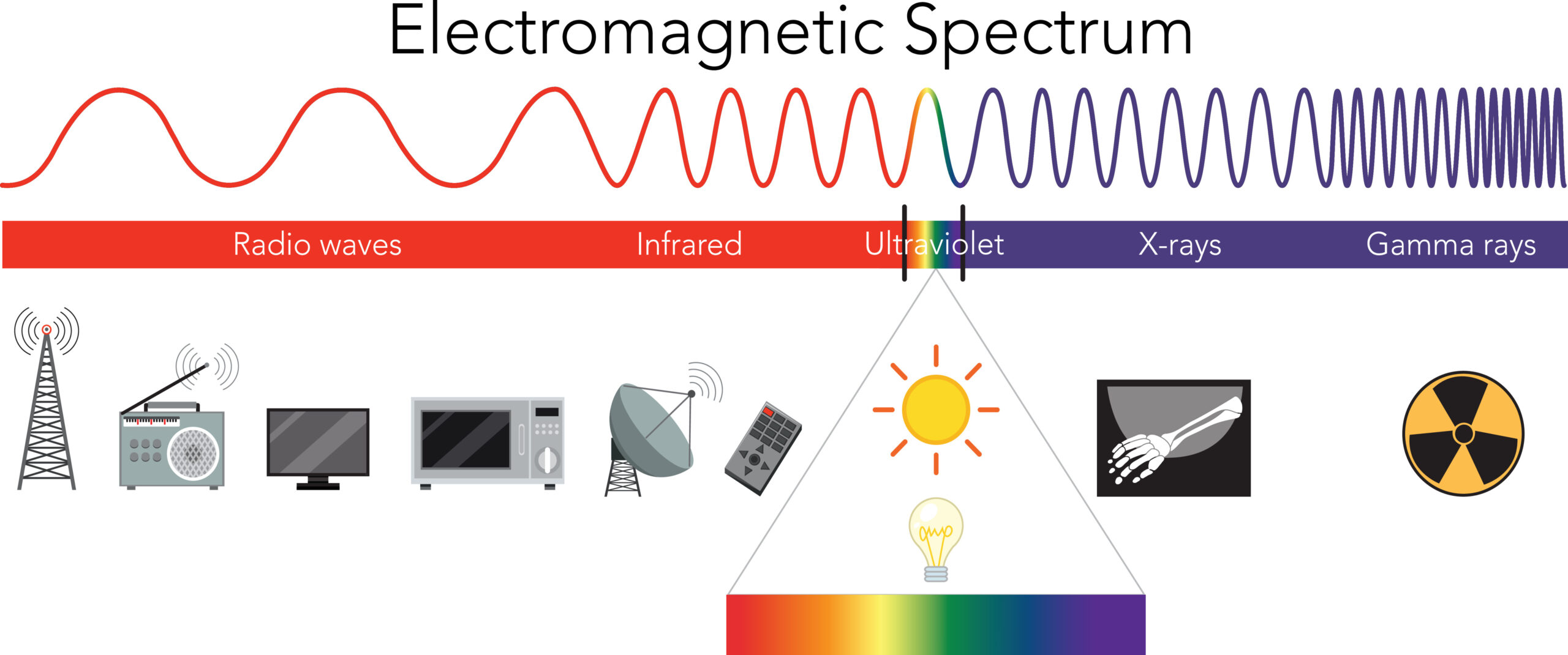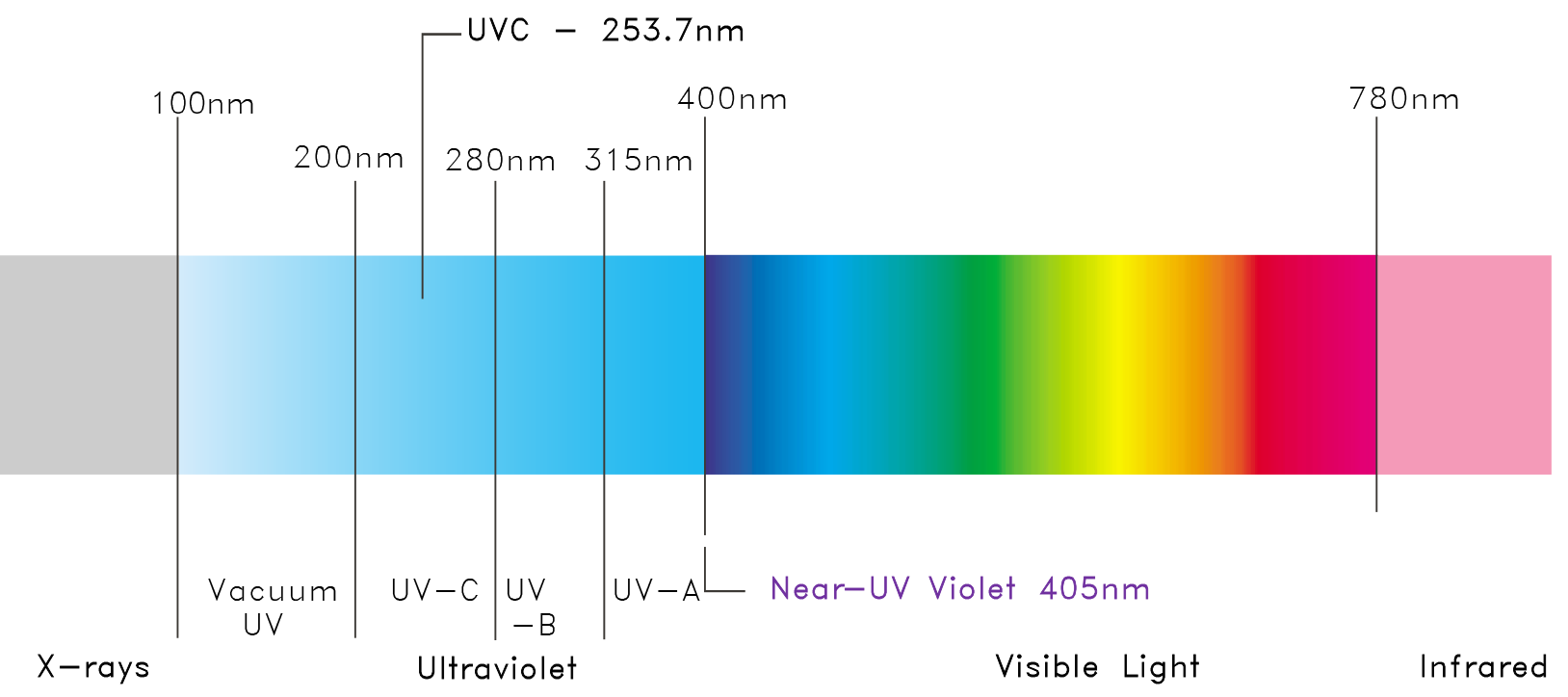Basic Science & Facts
Artificially produced ultraviolet C light (UV-C) is a low cost and highly effective solution for disinfecting facilities. It has been proven to kill microorganisms including bacteria, protozoans, and fungi. And, unlike the more commonly used UV-A and UV-B, it also deactivates viruses–including coronaviruses such as SARS CoV-1.[1] It is a healthy and environmentally friendly alternative to spraying (or fogging) premises with toxins or other harsh chemicals.
UV light has been used for disinfecting surfaces since 1877, for water since 1910, and for air since 1935.[2] Over the last 40 years, UV-A and UV-B have been commonly used in the US in water treatment facilities, food and beverage preparation, laboratory and healthcare facilities, in ductwork, and even in household tropical fish tanks. In Europe, UV-C has been used for more general disinfecting purposes over the last few decades.[3]
Due to the Covid-19 pandemic, caused by the novel coronavirus SARS-CoV-2, UV-C is a timely solution for more general disinfection purposes in the US. Studies show, that UV-C is effective against known coronaviruses such as SARS. [4]
UV kills microbes and deactivates viruses by disrupting their DNA and RNA, leaving them unable to infect or replicate. Bacteria and viruses vary somewhat in UV susceptibility, with fungal spores and mycobacteria being relatively harder to kill than more rapidly replicating microbes. But even fungi are effectively killed with high-dose UV-C.[5]
UV-C disinfects the entire area treated, including all surfaces and the interior air. It is complimentary to the daily cleaning and disinfecting regime required for high-touch areas. UV leaves no odor or residue. It gets into hard to reach areas, yet it requires no moving of furniture, electronic devices, machinery, or desktop papers.
[1] http://www.iuva.org/covid-19
[2] https://media.ies.org/docs/standards/IES-CR-2-20-V1-6d.pdf
[3] https://europepmc.org/article/PMC/6801766
[4] https://bmcinfectdis.biomedcentral.com/articles/10.1186/s12879-020-4847-9
[5] https://www.ncbi.nlm.nih.gov/pmc/articles/PMC7014767/
UNDERSTANDING UVC

The Electromagnetic Spectrum
UV light is to the left of visible light on the electromagnetic spectrum, with shorter wavelengths, measured in nanometers (nm). UV-C is at the shorter end of the UV spectrum. Its waves have higher energy and are more penetrating than the longer wave UV-A and UV-B. The higher energy and higher penetration rate is a two edged sword; it makes UV-C more lethal to microbes, but it will damage human skin and eyes if they are subjected to significant exposure. UV-C must only be administered by professionals trained in both efficacy and safety measures.
The UV and Visible Light Spectrum
Within the UV-C spectrum, different wavelengths have different properties. It has been determined that UV-C at 254 nm is in the range most effective for killing microbes. This technology kills 99.999% of bacteria and viruses in direct contact with UV-C light.[1]
[1] https://bmcinfectdis.biomedcentral.com/articles/10.1186/s12879-020-4847-9

